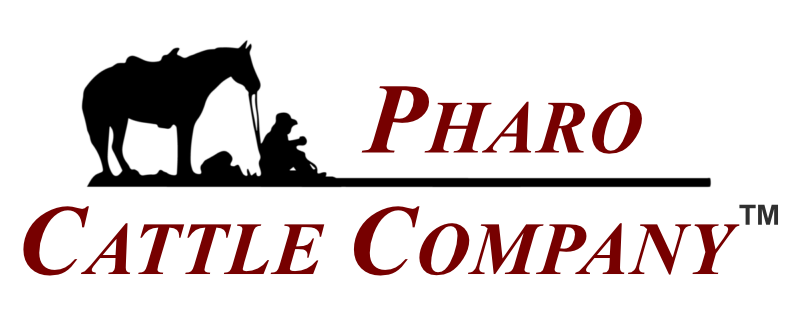Recently, I have had several phone conversations with customers and potential customers about how many cows you should run with a bull during breeding season. As you might expect, there is a big difference between what status quo bull producers recommend and what Pharo Cattle Company recommends.
In 2004, I wrote a newsletter article entitled “Sex is NOT Work for a Bull.” Have you ever heard a veterinarian or a bull producer caution against overworking a bull? What do they mean? How can you overwork a bull? They apparently don’t know there is nothing a bull would rather do than breed cows.
So why do the experts caution against overworking a bull? The problem lies in the fact that most bulls are high-input, overfat Diesel Bulls that were developed on a feedlot ration. They require more than the environment can provide. They melt and fall apart when introduced to the real world. Many of these overfat Diesel Bulls go lame. Sex is NOT the problem! The problem is in the way these bulls were bred, selected and developed.
Below is the long-held status quo recommendations for bull to cow ratio:
12 – 15 mo. old bulls 10 – 12 cows
15 – 18 mo. old bulls 12 – 18 cows
18 – 24 mo. old bulls 18 – 25 cows
24 mo. and older 25 – 35 cows
In nearly all situations, Pharo Cattle Company recommends you double the number of females per bull – but only if you are using PCC Solar Bulls. That means you will only need to purchase half as many bulls as you used to purchase. If you follow the status quo recommendations with PCC bulls, you will end up getting bulls injured.
The larger the cowherd, the higher our recommended cow to bull ratio. For example, putting one bull with 50 cows might make me a bit nervous because he has no backup. Putting four bulls with 200 cows, however, does not concern me one bit. If one of those bulls gets injured, I would have no problem letting the remaining three bulls finish the season.
What’s a bull worth that can breed twice as many cows for twice as many years? You will be happy to know he is worth a whole lot more than you will ever have to pay for him! Our low-input Solar Bulls will cost about the same as the high-input Diesel Bulls you have been using. To request a catalog for our upcoming bull sales, click here or call us at 800-311-0995.
To avoid bull injuries, we strongly recommend you reduce the number of bulls by 50 to 75 percent after the first 21 days. If you are calving in sync with nature and/or with your forage resources and if your cows are in good enough shape to cycle, then 70 to 80 percent of your cows should be bred in the first 21 days. You won’t need very many bulls to cover the remaining 20 to 30 percent.
